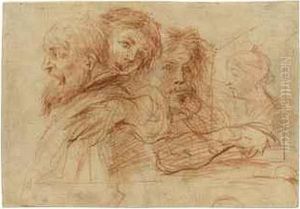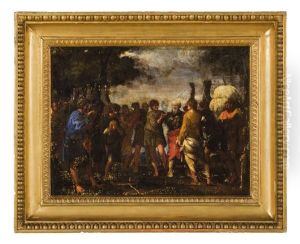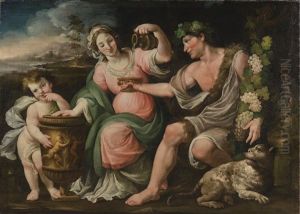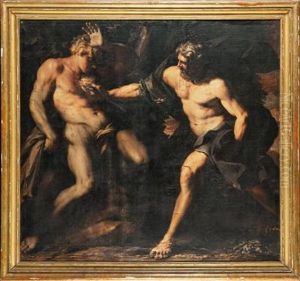Giovanni Maria Bottalla Paintings
Giovanni Maria Bottalla, born in 1613 in Savona, then part of the Republic of Genoa, was an Italian painter of the Baroque era, known for his dynamic compositions, vibrant use of color, and adept skill in depicting light and shadow. His work, although not as widely recognized as some of his contemporaries, demonstrates the vigorous and innovative spirit of Baroque art, with a particular emphasis on dramatic intensity and emotional depth.
Bottalla was initially trained by his father, a modest artist, before moving to Rome at a young age to further his studies. In Rome, he became a pupil of Pietro da Cortona, one of the leading painters of the Baroque period, known for his grandiose frescoes and significant influence on the development of Roman Baroque aesthetics. Under da Cortona's guidance, Bottalla honed his skills, absorbing the principles of dynamic composition and the dramatic interplay of light and shadow that would characterize his later work.
Despite his promising career, Bottalla's life was cut short when he died unexpectedly in 1644, at the age of 31. His early death meant that his oeuvre was relatively limited, yet the works he left behind, including altarpieces, frescoes, and oil paintings, are noted for their vigorous style and emotional intensity. Bottalla's art reflects the transitional phase of Baroque painting, with a notable inclination towards the theatricality and dynamic movement that would come to define the High Baroque.
After his death, Bottalla's contributions to art were somewhat overshadowed by his more famous contemporaries and pupils. However, in recent years, art historians have begun to re-evaluate his work, recognizing Bottalla's role in the development of Baroque painting in Italy. His ability to combine the grandeur of Cortona's influence with his own unique sensibilities makes him a significant, if underappreciated, figure in the history of Italian art.



